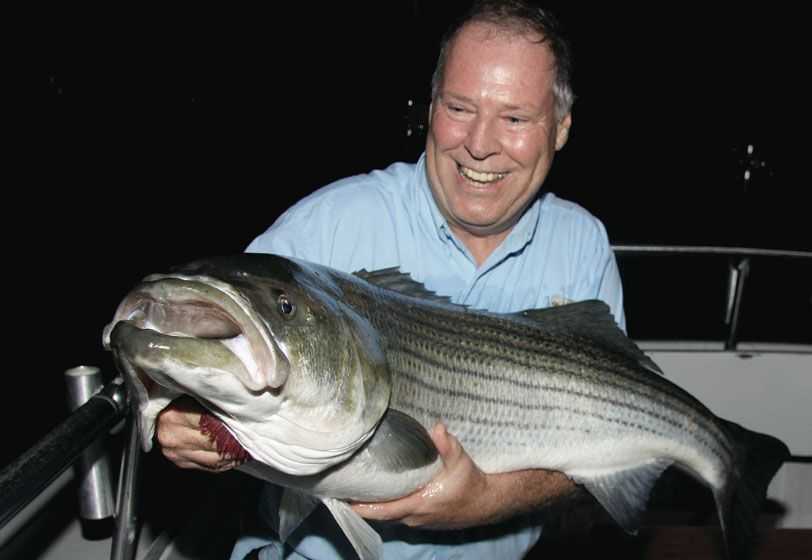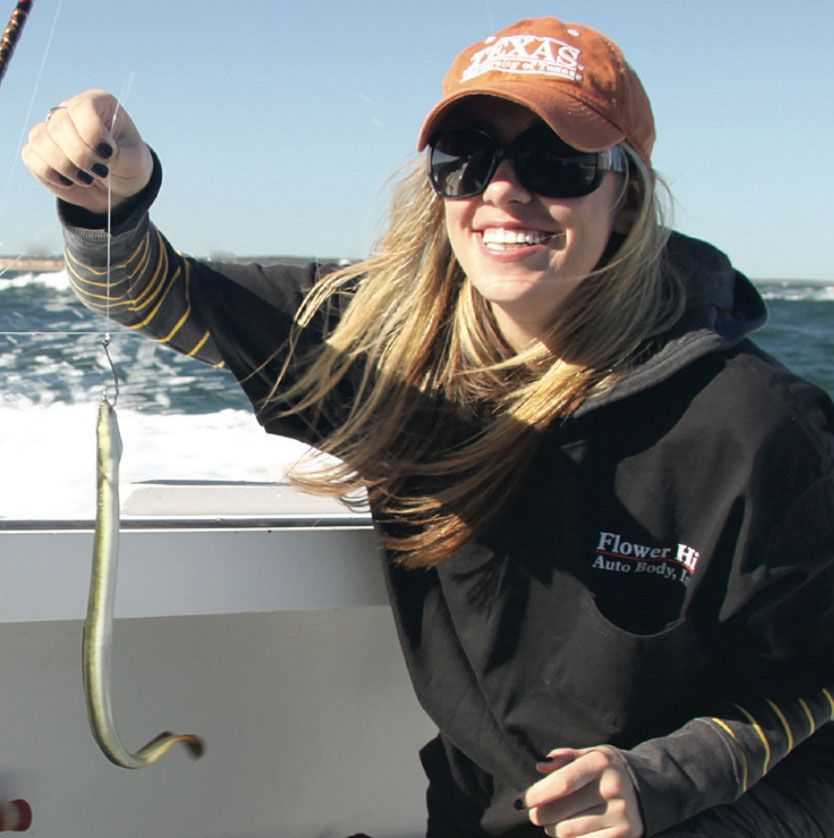
By the time mid-July rolls ‘round on the calendar, stripers at most New York ports have settled into their summer patterns of feeding at dawn, dusk and after dark, sulking in deep water at mid-day, and becoming very tide specific. Committed to memory by this point are the spring flings along the open beach and aggressive feed- ing patterns of bass recovering from a long winter of near inactivity. To connect now actually takes work – but the rewards can still be great, especially if you tilt the odds in your favor by keeping a few basic points in mind.
FISH THE STRUCTURE
Stripers become increasingly structure conscious as the water warms and summer advances. Use this inclination to benefit your striper search by knowing these fish favor some structure types over others. Bridges should be at the top of your list. Most will hold a resident summer population of linesiders right through the fall. Inlets should be spot number two. Most inlets feature a deep-water pocket or two at some point – an area significantly deeper than the inlet main channel – and these are great starting places to find the bass holding tight. A third prime choice is rip water, especially when it is located on a curve or bend at the head and tail end of a channel. These areas hold summer keepers on a consistent basis. Since all three of these bottom types offer cool, deep water, bank your chips at one of these spots rather than run around chasing birds or casting blind to better known spring hot spots that might hold little more than schoolies during summer’s swelter.
LATE NIGHT FLOOD TIDES
Warm water turns summer stripers off. Cool water has the opposite effect. As water drains from the flats deep inside the bays, it carries with it enough heat to really shut down the feeding activity of the fish that are holding just about anywhere inshore – even in the inlets and up to a mile outside the ocean surf. Thus, rising wa- ter, with its cool injection of crisp, offshore ocean flow that may be as much as five to seven degrees cooler than the ebb, is the tide to work during the summer months. Check the tide charts for flooding tides that start between 9:00 p.m. and midnight. Then make sure you are on the water to great the arrival of the cooling influx. That should put both you and the biggest bass on the same schedule. The first quarter and last quarter of rising water tends to be the most productive tide in many areas during the dog days of summer, so be sure to take advantage of it.
LIVE EELS AND BUNKER CHUNKS
Real bait tends to catch more big fish than artifi- cial lures during the sum- mer doldrums and two baits in particular stand out where striped bass are concerned: live eels and bunker chunks. Fish the bunker chunks during daylight hours, the slimy snakes after dark.
An interesting point about bunker baits during the summer is that big bass definitely seem to prefer bunker heads over the other bunker body parts. Bluefish, on the other hand, tend to prefer the tail and soft belly sections.
If you are really targeting keeper stripers, use all your bunker heads first. It you just want some action and blues are fair game – or if fishing with in-laws – the tail and mid-section will serve just fine.

Once the sun sets, live eels are the kings of bass baits. Most anglers will fish these on a standard three-way rig with a heavy weight keeping the eel near the bottom as it drifts through the middle of an inlet or rip, but another great way to connect during the start and end of the tide is to cast them weightless into deep-water pockets and retrieve them back to the boat as slowly as possible. How slowly? Just enough for your line to stay tight as you reel it back. Try this around bridge abutments, in eddy water, or in deep holes as noted earlier, and you might just drill the bass of a lifetime during the dead of summer.
Just as large stripers have a preference for bunker heads, they also have a prefer- ence for certain types of eels. Mid-sized eels measuring 12 to 14 inches seem to work best during the summer. Especially productive are darker eels – the closer one looks to being all black, the better your chances of interesting a cow.
MID-WEEK SWEET SPOT
Want to fish without a lot of boating traffic around? Then head out on a Tuesday or Wednesday night. It might mean taking a vacation day to follow-up, but you’ll be competing with far fewer anglers at mid-week than you will on the weekends. Fishing at mid-week gives the bass a chance to pocket-up and regroup after the tra- ditional weekend pounding, often resulting in a feeding binge and the fish in general seeming less skittish. Since the bass are likely to be holding in fairly well-known pockets at this time of the year, fishing pressure can get pretty intense. Heading out on the least pressured days or nights just makes sense.
Of course, conning a hefty striper into swallowing your offering is only half the battle. The other half is wrestling it into the boat or up onto the beach. Bump up your gear from spring’s light tackle to 20- and 30-pound test set-ups. Sharpen each hook you tie to the end of your line to ensure it will stick in the toughest of maws, and dou- ble-check every knot to make sure it is perfect. Now, get out there and catch ‘em up.









